The Apprenticeship of Steven Soderbergh: King of the Hill (1993)
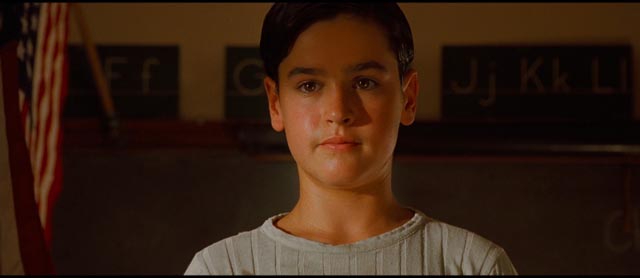
At this point in Steven Soderbergh’s career, after more than two dozen wildly varied features in 25 years, ranging from small independent “art” projects like Bubble to rousing popular movies like Erin Brockovich and the empty commercialism of the Ocean’s series, it’s interesting to look back at his beginnings and to note that he arrived almost fully formed as the chameleon he now appears to be.
His first feature, sex, lies and videotape, had such an impact at Sundance in 1989, and quickly went on to garner numerous international awards, that it all but single-handedly launched the American indie movement we’ve been living with (for better or worse) ever since. But Soderbergh didn’t do the obvious thing and follow-up with another movie in the same vein; he went to Prague to film a script by Lem Dobbs which attempted to transform the life of Franz Kafka into a Kafka-esque nightmare. Much bigger than his debut film, Kafka (1991) was also much less coherent stylistically and thematically and ended up looking like the uneven work of a highly promiscuous film school graduate.
Given that these two films made Soderbergh difficult to pin down, it seems surprising that he was then signed on by a major studio (Universal) to make a couple of projects which on the surface looked more obviously commercial. His work on these two features represents some of the best and the worst that he’s done, and the experience of making them caused a drastic retreat and re-evaluation of what he wanted to do. Out of this self-reflection came the aggressively unconventional and even more aggressively anti-commercial Schizopolis (1996), released within a month of Gray’s Anatomy, the fourth of Spalding Gray’s monologue movies. Soderbergh seemed to be swinging wildly on a pendulum between the independent and the commercial, but the return swing after these last two “art” films seemed to centre him. Out of Sight (1998) combines fine commercial instincts with a self-assured, non-linear style of storytelling, qualities which have marked the best of his subsequent output, whether small or large scale, mainstream or independent.
Now Criterion, in another of their very generous recent packages, have brought out those two studio-backed features from the mid-’90s, supplemented with some illuminating extras.
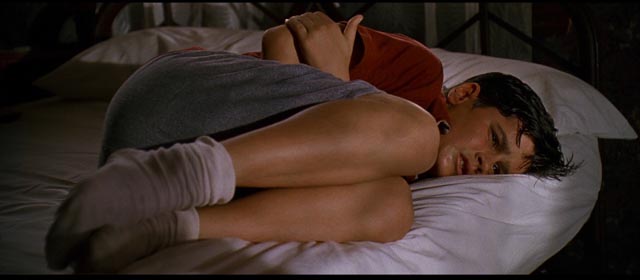
King of the Hill (1993)
In his comments on the King of the Hill (1993) disk, Soderbergh mentions that it’s one of his films which is mentioned most often by people who approach him to talk about his work, yet he himself refers to it as a failure. But then, an artist is often not the best judge of his own work. Adapted from a memoir by A.E. Hotchner about his experiences as a 12-year-old boy in St Louis in the summer of 1933, King of the Hill is a rich and satisfying evocation of childhood and the traumatic process of growing up. Soderbergh’s self-directed complaint is that he made it too beautiful – and it’s true that every image is luminous, awash in rich colours and clear summer light. But this actually works well with the bleakness of Hotchner’s story. To tell it with a gritty style, emphasizing the harshness of life in the early years of the Depression, would be merely to underline the obvious, and border on cliche. What Elliot Davis’ lush cinematography does in evoking a bright, hot summer is heighten the emotions experienced by Aaron (Jesse Bradford) by setting his fears and insecurity against a canvas which paradoxically appears abundant and welcoming.
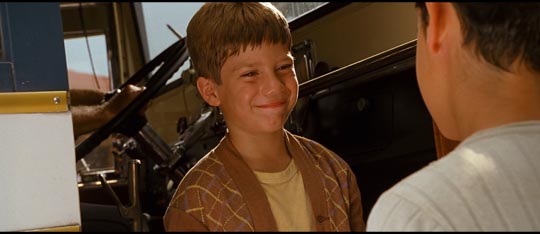
King of the Hill is about the months during which circumstances strip Aaron’s family away, leaving him to fend for himself. His younger brother Sullivan (Cameron Boyd) is shipped off to relatives because there isn’t enough money to provide for him; his mother (Lisa Eichhorn) is sent to a sanitorium to recover from a renewed bout of TB; and his desperate father (Jeroen Krabbe) lands a sales job which takes him out of state, leaving Aaron alone in their seedy hotel room. Knowing how precarious his position is, Aaron is prone to invent stories about himself and his family to stave off the intrusive interest of adults he instinctively knows are a threat (even if a well-meaning one) to him.
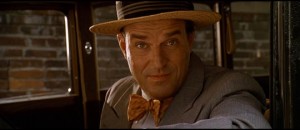
and mother Lisa Eichhorn
He survives by his native wiles and with the help of his friend Lester (Adrien Brody), who lives down the hall. As Aaron watches the other denizens of the hotel gradually expelled by the bank which is turning it into a sleazy but profitable hang-out for prostitutes, he retreats into the room to protect the family’s few possessions from being seized. He runs out of food; the man across the hall (Spalding Gray), who has in an odd way befriended him, commits suicide; and Aaron slips into an hallucinatory state driven by hunger. Here Soderbergh’s classical style is abruptly fractured and in a powerful, brief montage, all of Aaron’s fears and feelings of abandonment explode to the surface. When he emerges from this fugue state, he has changed – all his expectations and beliefs about family, security and his place in a structured social world have been smashed. He has, in fact, in one brief moment grown up and attained independence, but it’s a gain fraught with melancholy and when the family is at last reconstituted, brother and mother returned from exile, father back with a new job, Aaron stands outside of the group, no longer able to invest himself in the illusions of domestic stability.
This is one of the richest and least sentimental films about childhood (in tone, though not in style and content, reminiscent of Bill Douglas’ My Childhood, 1972) and despite Soderbergh’s own feelings about it, it remains one of the finest things he has ever done. You can sense his directorial intelligence and commitment in every image, in every nuance of character (and the cast is exceptionally good), and in the precise yet unforced evocation of period in the production design. And yet when he had finished making it, he was already feeling averse to the whole process of filmmaking, a feeling which is apparent in every frame of his follow-up, The Underneath (1995), a remake of Robert Siodmak’s classic noir, Criss-Cross (1949; both based on a pulp novel by Don Tracy), about an armoured car heist. In his introduction to the movie on the Criterion disk, Soderbergh takes responsibility for the film’s many faults, attributing them to his own boredom and disengagement.
*
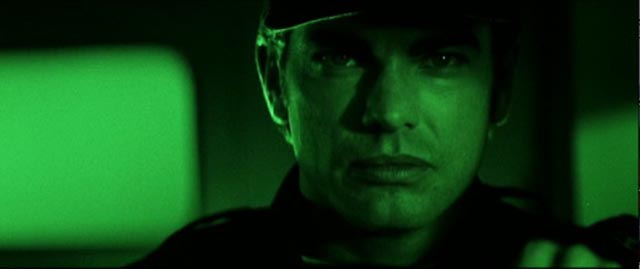
The Underneath (1995)
That boredom manifests in an excess of extreme visual play at the expense of telling the story. The most notorious manifestation of this is the bizarre dinner scene early in the movie at which Michael Chambers (Peter Gallagher) is visually trapped by the family he has just returned to after fleeing town years earlier because of gambling debts. At the table are his mother (Anjanette Comer); Ed Dutton (Paul Dooley), the man she’s going to marry; and Michael’s hostile brother David (Adam Trese). Soderbergh shoots the entire scene in increasingly bizarre compositions which feature Michael in enormous close-up crowding one side of the frame, while a second character is (thanks to a split diopter) in perfect focus in the background at the other side of the frame. The scene becomes extremely funny, not because of the dramatic content (which is all about various layers and lines of tension), but because the bored director keeps calling attention to his own boredom and his attempt to amuse himself.
As for the story, told in what would eventually become a Soderbergh signature non-linear way, he can’t breath any life into it no matter how hard his actors try – and they do try. Soderbergh in retrospect offers a kind of apology for abandoning them. Visually striking, technically polished, The Underneath lies inert on the screen and serves as a cautionary tale for filmmakers who might take on a job without the least personal connection with the material they’re offered.
Criterion’s dual-format edition of King of the Hill and The Underneath, by displaying so sharply Steven Soderbergh’s strengths and weaknesses, inspires a greater appreciation of the choices he has made since and perhaps an understanding of the reasons behind those choices. He has refined his skills over the years, but his filmography displays an on-going need for him to amuse himself as often as he has something serious to say. The big difference between The Underneath and the later Ocean’s series is that he has learned how to amuse his audience at the same time.
The disk
Criterion’s dual-format edition of King of the Hill comes on three disks, 1xBRD/2xDVD, with identical content in both formats. The 2K transfers of both features are flawless, their colours (and both films have richly considered colour schemes) breathtaking. The soundtracks are equally flawless.
The supplements
The most generous extra, of course, is the second feature, The Underneath, which helps to put King of the Hill in a larger context. Beyond that, the most interesting and informative supplements are Soderbergh’s comments about each of the films; intelligent, self-aware, with a clear critical perspective on his own work, his remarks provide fascinating insights into both films. Interestingly, A.E. Hotchner seems to have a more favourable opinion of the adaptation of his own memoir than the director himself; Hotchner sees the work not as an objective account, but rather as an exploration and evocation of memory, a position which supports the visual choices which Soderbergh now discounts.
A visual essay by :: kogonada analyzes the brief hallucinatory sequence which, he asserts, not only transforms Aaron’s character and his view of the world, but also defines Soderbergh’s overall attitude to narrative in his subsequent work, a striving to fracture the demands of traditional storytelling to get at what lies underneath narrative; an associative rather than a causal approach.
The accompanying booklet contains an appreciative essay by critic Peter Tonguette; an articulate interview with Soderbergh conducted in 1993 by Michel Ciment and Hubert Niogret for Positif; and an excerpt from Hotchner’s memoir which suggests how closely Soderbergh caught the tone and content of the book in his adaptation.
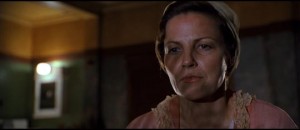
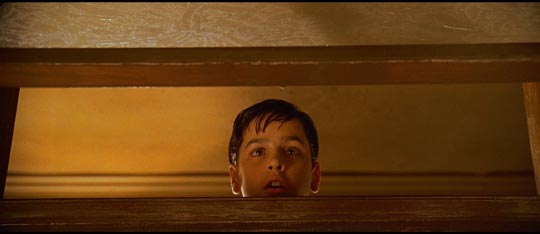
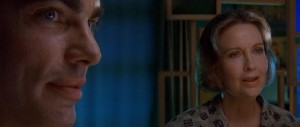
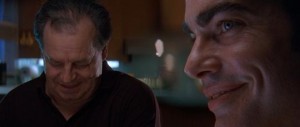
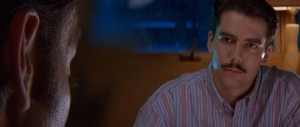
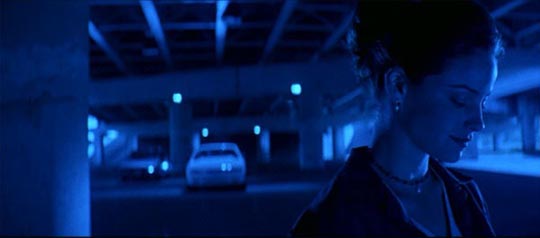
Comments